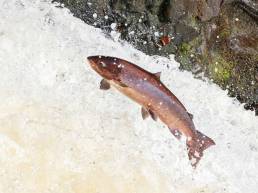How does the pricing process for salmon oil work?
A lot has been said about this issue in recent months. In this newsletter we would like to provide some insight as to how pricing works. Firstly, the purchase cost of salmon oil depends on the fish quota and the market situation; it also fluctuates with world market prices. Secondly, the price depends on the EPA+DHA content of the oil. Fact is that these factors are approached in varying and sometimes incorrect ways. Below, the E.F.S. sales team has tried to give you a crystal clear overview of our price approach. We will use the price of soybean oil as our point of departure.
Suppose the price of soybean oil is € X per tonne and the price of a (fish) oil with a 16% EPA+DHA content is € Y per tonne. The difference in price between a standard oil and the EPA+DHA (fish) oil would then be € Z (€ Y – € X). In order to arrive at the value of 1% EPA+DHA, this amount is divided by the percentage of EPA+DHA. In this case the price per 1% of EPA+DHA would be € Z/16. This price (€Z/16) can be multiplied by the EPA+DHA content of various fish oils or omega-3 sources. Based on the price of the product with a 16% EPA+DHA content, salmon oil that contains 11% EPA+DHA may cost €X+11*Z/16. A lower price represents a price advantage for the customer. The price can be calculated for any situation if the current prices are put into the above formulas.
Market prices
Apart from this particular approach, E.F.S. newsletters always report on the market price situation for salmon oil. In the past quarter prices have gone up by a few dozens of euros per tonne. This price increase can be explained by the pre-announced disappointing quota in South America.
You may also like
Salmon oil for horses?
August 15, 2019
A common phrase is; ‘Horses are herbivores, why should we feed them salmon oil?’. E.F.S. believes this is mainly due to unfamiliarity in the horse farming sector. From a scientific point of view there are no impediments…
Salmon oil: vegetarian salmon and alternatives
May 19, 2017
Salmon oil is a widely used oil of which 99% is derived from farmed salmon. Its omega-3 fatty acids have positive health effects. Most of the retail business, with the exception of a few suppliers, only has access to…
Salmon oil and facts
March 1, 2016
Even as early as the 1920s it was already known that certain fatty acids are essential to the good health and growth of animals. Later research showed that one of these essential fatty acids is omega-3.
The plain naked truth on salmon oil
October 6, 2012
There are many stories circulating in the market about salmon oil. In order to bring some clarity to this matter, we focus on the facts pertaining to salmon oil in this article. This applies to all fresh salmon oil.







